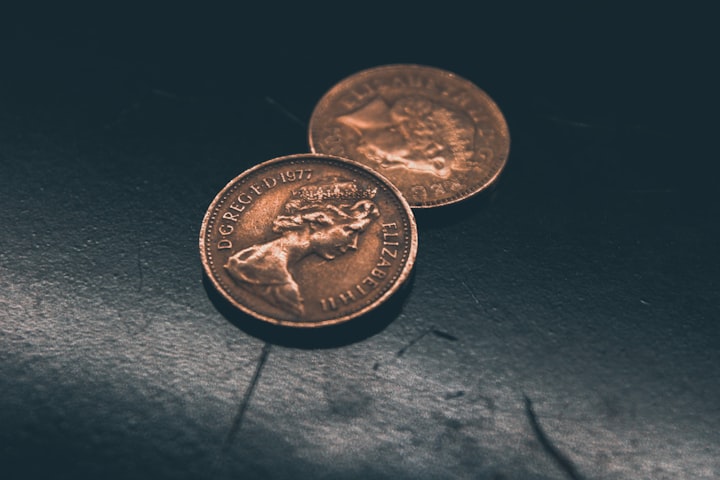The Penny's Remarkable Journey: From Ancient Times to Modern Day
How the World's Most Famous Coin Survived for Over Two Millennia

The penny is the smallest denomination of currency in the United States, worth just one cent. Despite its small value, the penny has a long and fascinating history that dates back more than 2,000 years. From its origins in ancient Rome to its current status as a controversial symbol of American culture and identity, the penny has played an important role in the history of money and economics.
The penny's origins can be traced back to ancient Rome, where the first "pennies" were minted in the third century BCE. These coins, known as "aes signatum," were made of bronze and weighed about one pound each. They were used primarily as a medium of exchange in the Roman economy and were often hoarded by wealthy individuals as a store of value.
Over the centuries, the penny evolved and changed in both form and function. During the Middle Ages, pennies were made of silver and were the most common form of currency in Europe. In the early modern period, as trade and commerce expanded, new forms of currency such as banknotes and gold coins emerged, but the penny remained a popular and widely-used form of currency.
In the United States, the penny was first minted in 1793. At the time, it was made of copper and weighed more than three times its current weight. Over the years, the penny has undergone a number of changes, including a switch to zinc-coated steel during World War II due to copper shortages, and the introduction of the Lincoln penny in 1909 to commemorate the 100th anniversary of Abraham Lincoln's birth.
Despite its long history and enduring popularity, the penny has become a controversial symbol of American culture and identity in recent years. Critics argue that the penny is no longer a useful or cost-effective form of currency, as its production costs often exceed its face value. In addition, the penny's continued use has been criticized for perpetuating a system of economic inequality, as low-income individuals are often forced to use cash and therefore rely on pennies more than wealthier individuals who use credit and debit cards.
Despite these criticisms, the penny remains a beloved symbol of American culture and identity. It has inspired countless songs, poems, and works of art, and is widely recognized as a symbol of thrift and frugality. While its future remains uncertain, the penny's rich history and enduring legacy ensure that it will always hold a special place in the hearts and minds of Americans and people around the world.
In conclusion, the penny has a long and fascinating history that dates back more than 2,000 years. From its origins in ancient Rome to its current status as a controversial symbol of American culture and identity, the penny has played an important role in the history of money and economics. Despite criticisms of its usefulness and cost-effectiveness, the penny remains a beloved symbol of thrift and frugality, and its rich history and enduring legacy ensure that it will always hold a special place in the hearts and minds of people around the world.
About the Creator
Billionaire hustler
Embrace the struggle, push yourself to new heights, and never give up. Warriors rise up and fight back. The power to change your life is in your hands. Together, we are unstoppable.






Comments
There are no comments for this story
Be the first to respond and start the conversation.